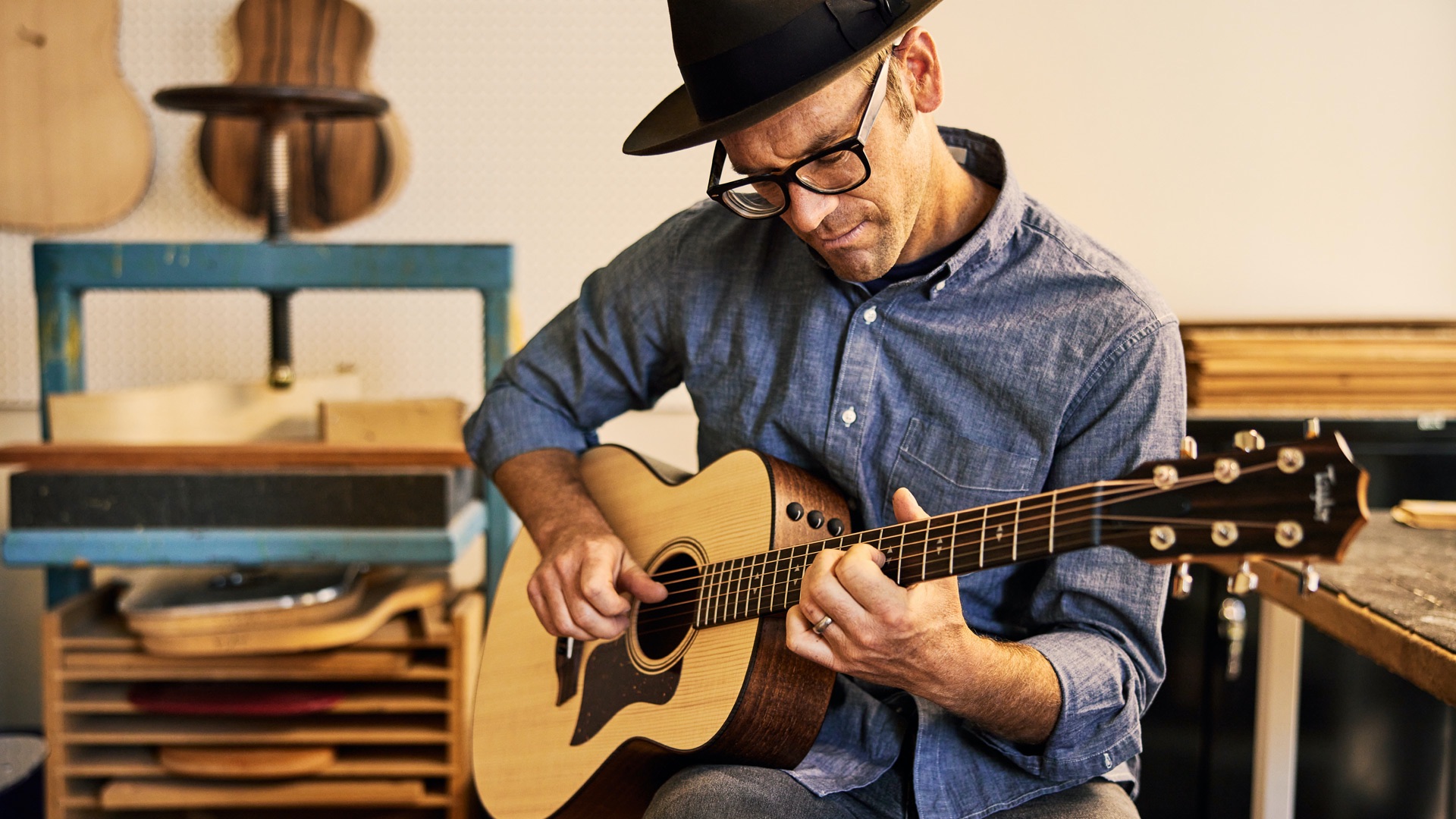I love the guitar in all of its forms — flat-top guitars, classical guitars, archtop guitars, resonator guitars, electric guitars and everything in between. For me, the first guitar I had experience with was the acoustic guitar leaning in the corner of our home, which grew into a lifelong guitar passion. The first guitar I could lay a personal ownership claim to was an electric guitar, and wow, did I ever have fun with that. I already had an affinity for electricity, for magnets, and for how things worked, but even those points of interest were overwhelmed by the sheer charisma and excitement of electric guitars. Their shapes, sounds, expressions feel like they have their own gravity pulling attention toward themselves. The music made with those sounds layered on another level of enchantment I’ve never been able to shake off. Much of my formative time was spent playing electric guitars in bands with friends.
Growing up in Southern California, I was surrounded by the collision of surfing, skateboard, auto craft, music, art and architecture cultures, as well as the people creating them. I didn’t much recognize these influential cultures for what they were when I was younger, having been blinded by the veil of familiarity. I figured my hometown experience was typical and assumed everywhere else was like that. Having grown older and seen a wider variety of places, the uniqueness of my hometown picture is in sharper focus. The sights, sounds, influence of this Southern California experience is unique in my opinion, and it certainly informed the creations designed and made here. As I see it, there are few instruments that could so seamlessly blend those influences as electric guitars.
I love the flowing, organic curves and broad expression of sound I was exposed to during my earlier experiences with electric guitars.
One common thread among many of these Southern California cultures is they inherently are accompanied by a level of subjectivity. Lots of sports or other pursuits are easy to measure with metrics like the time elapsed during a race or which contestant crossed the finish line first. A pursuit like surfing or music isn’t so easily evaluated, as the act is based in aesthetic value. How a player performs is going to launch evaluative questions about how a listener was moved, the emotion conveyed, the physical experience or bravado behind the effort as much as whatever technical merits might be there. As an aside, it’s fun to imagine putting an objective measurement to something like a musical context. Imagine all the musicians in a symphonic orchestra racing to see who could be the first player to arrive at the final note. Or judging a piece of music the winner because it had the highest number of notes played. Cacophony aside, it’s apparent to me that many of the activities and creations I’ve lived among shouldn’t be evaluated with objective measurements.
Knowing there are creations and activities where value is based on aesthetics over numbers offers freedom to choose what we enjoy — that which moves us. I think that is one of the aspects of building and playing guitars I like so much — we’re free to choose what we like for the simple reason that we like it. Maybe a player likes the color of one instrument best. Or the shape, or the way it feels under their fingertips, or the sound. Maybe they like that a musical hero played something reminiscent.
I love that each player gets to choose what resonates with them.
In my case, I love the flowing, organic curves and broad expression of sound I was exposed to during my earlier experiences with electric guitars. That’s certainly a reason my tools first began to carve away wood and create a cutaway like the one that became the compound contour shaping seen on some Builder’s Edition guitars like our new 814ce. The smooth, ergonomic contours and edges carry a hint of an electric guitar inspiration with a hint of classical violin tradition, put into the context of a thoroughly modern acoustic guitar. Regardless of what the exact catalyst is, I love that each player gets to choose what resonates with them.
These personal music and cultural inspirations are a driving force behind the recent electric guitar creations that have come from my shop and have warranted a new brand and identity —something we call Powers Electric. These guitars are firmly rooted in the Southern California world I grew up in, with the influences I’ve felt reflected into the instruments themselves. This effort has a taste of coming full circle for me, as these are a culmination of a few decades of learning and ideas channeled into an instrument I wanted when I was a kid. These are serious guitars, which translates to serious fun and games. This season, as we bring to the forefront new instruments we’ve been working on, both acoustic and now electric, I hope you find some fresh inspiration in making music with them and a spark of the joy that ignited your interest in playing guitar to begin with. Whether an acoustic or an electric, large or small, six strings, twelve or some other number, have fun making music. It’s good to play.
